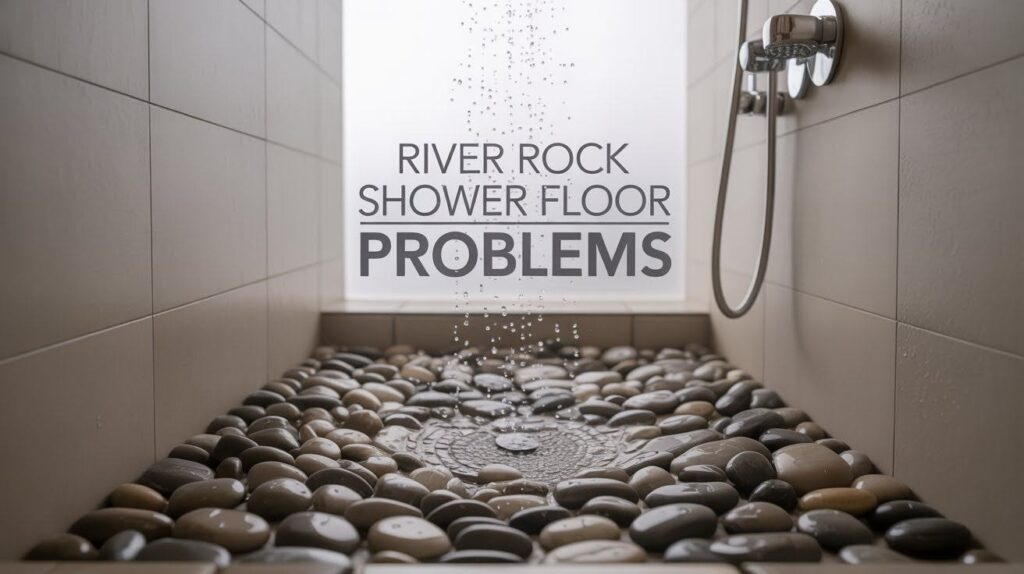River rock shower floors bring natural beauty in conjunction with a spa-like feel to bathrooms because they are increasingly popular in modern homes.
A lot of homeowners enjoy the quite relaxing atmosphere. The feeling arises from the rough facade and natural appearance.
However, river rock shower floor problems can quickly turn this design dream into a maintenance nightmare.
I’ve worked for countless homeowners when they face these issues, and proper care makes all the difference.
I will cover each of the 11 most common problems that you will face within this guide, such as grout failures and such as cleaning challenges, and then show more practical solutions that can prevent each one or that can fix each one.
Why River Rock Shower Floors Require Special Care
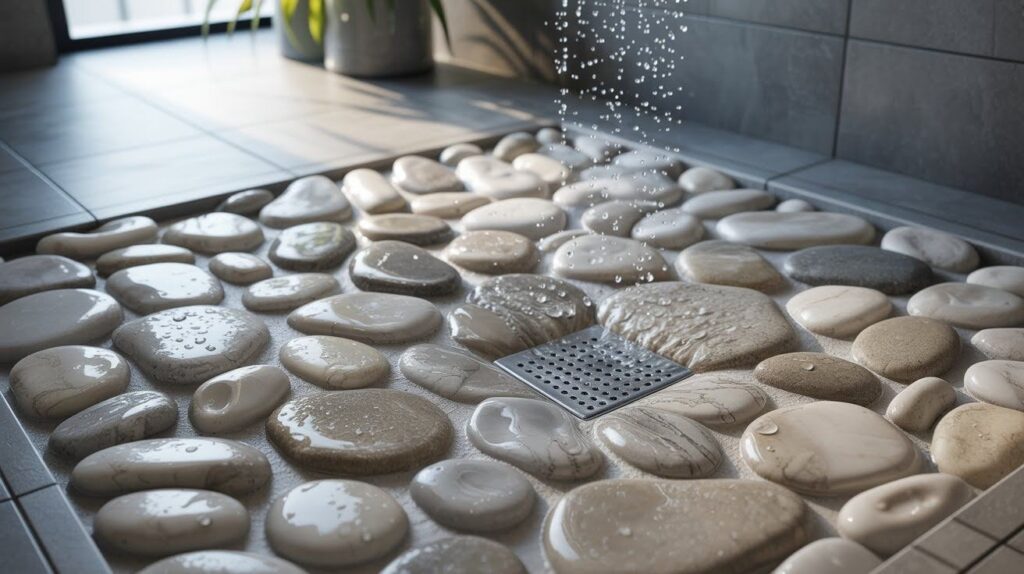
Natural river rocks have uneven surfaces that trap dirt, soap, and water more than smooth tiles. Their porous nature allows liquids to penetrate, making them vulnerable to staining and moisture problems.
River rock floors contain significantly more grout lines than standard tiles due to irregular shapes and smaller sizes.
This means more maintenance and potential failure points. They require specialized cleaning products and sealing techniques to protect both stones and extensive grout networks, demanding more time and attention than regular tile floors.
List of 11 river rock shower floor problems
These 11 common issues affect river rock shower floors, from grout deterioration to cleaning difficulties. Learn what to expect and how to address them.
1. White Haze on Stones and Grout
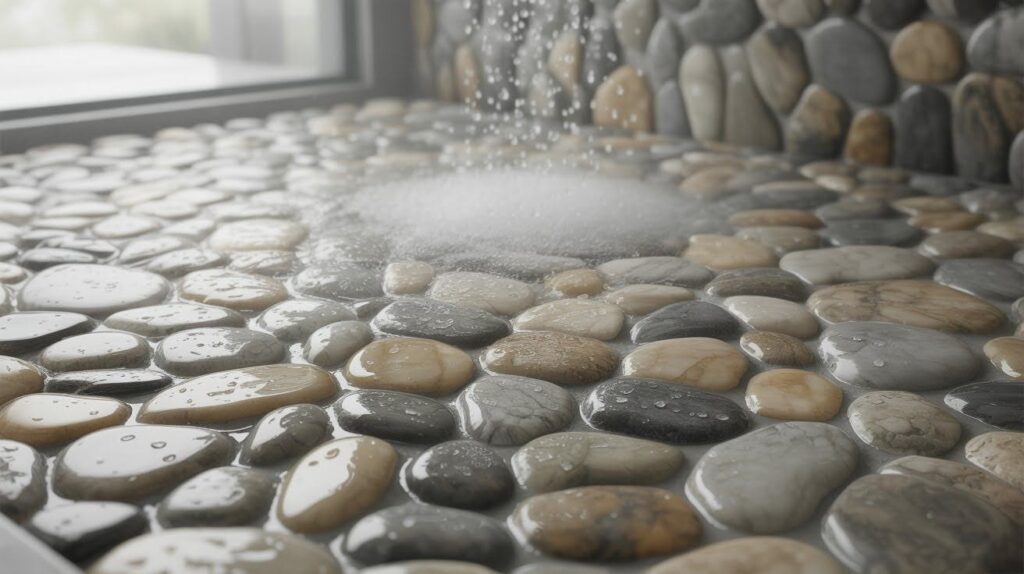
Causes
White haze appears when minerals from water rise to the surface through evaporation. Non-breathable sealers trap moisture underneath, forcing minerals upward.
Solutions
Use diluted vinegar for fresh efflorescence. If it persists, strip the old sealer and reseal with a breathable, penetrating product.
2. Soap Scum Buildup

Causes
Shampoos, soaps, and conditioners leave residue that accumulates on textured river rock surfaces.
Solutions
Rinse thoroughly after each use. Clean weekly with pH-neutral stone cleaners and a soft-bristle brush.
3. Mold and Mildew Growth
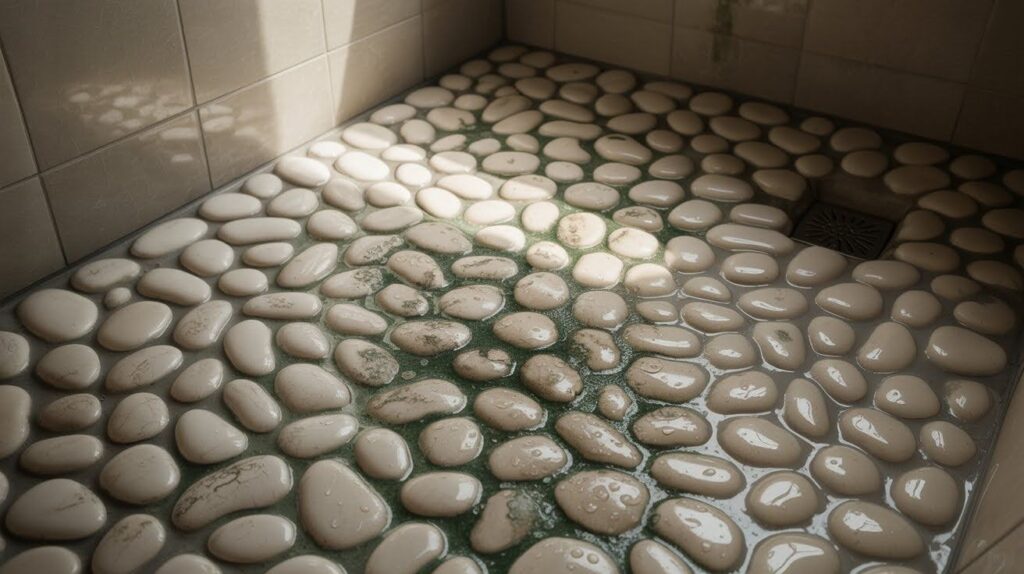
Causes
Poor ventilation keeps showers damp. Moisture trapped in grout lines creates ideal conditions for mold growth.
Solutions
Run exhaust fans during and after showers. Inspect and reseal grout regularly to prevent moisture accumulation.
4. Staining from Shower Products
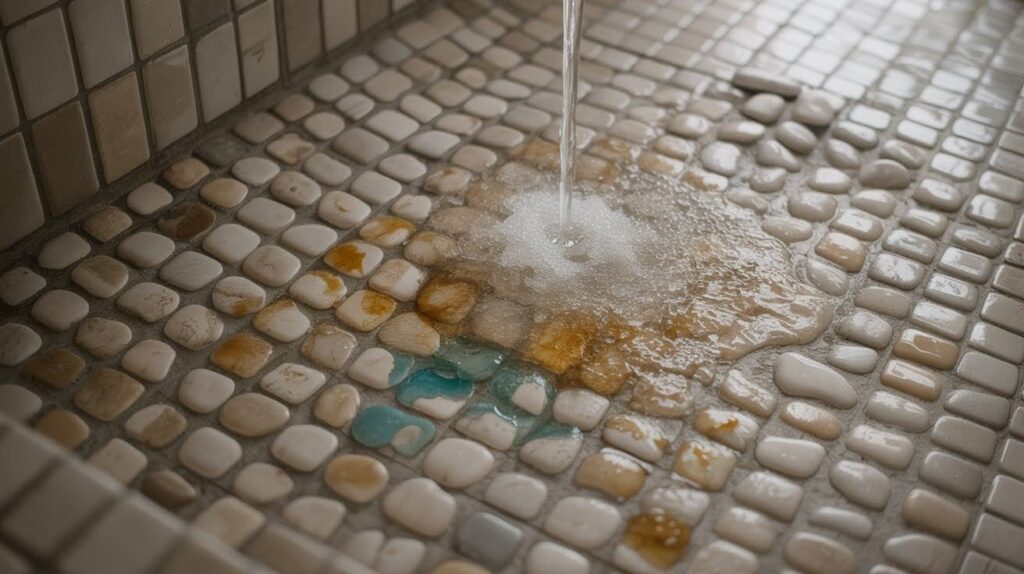
Causes
Oils, hair dye, and colored bath products penetrate porous river rocks and bond with the surface.
Solutions
Clean spills immediately. Use stone-safe cleaners for stubborn stains that have already set.
5. Etching or Surface Damage
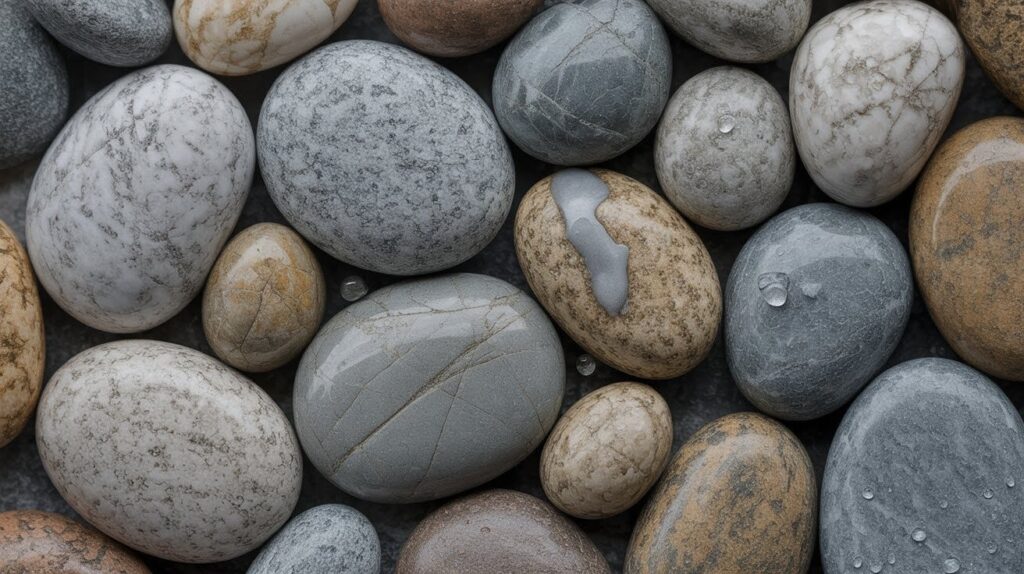
Causes
Harsh acidic cleaners like vinegar or bleach eat away at stone. Abrasive scrubbing pads physically scratch surfaces.
Solutions
Use only pH-neutral cleaners and soft cloths. Professional stone polishing can restore etched surfaces.
6. Grout Deterioration
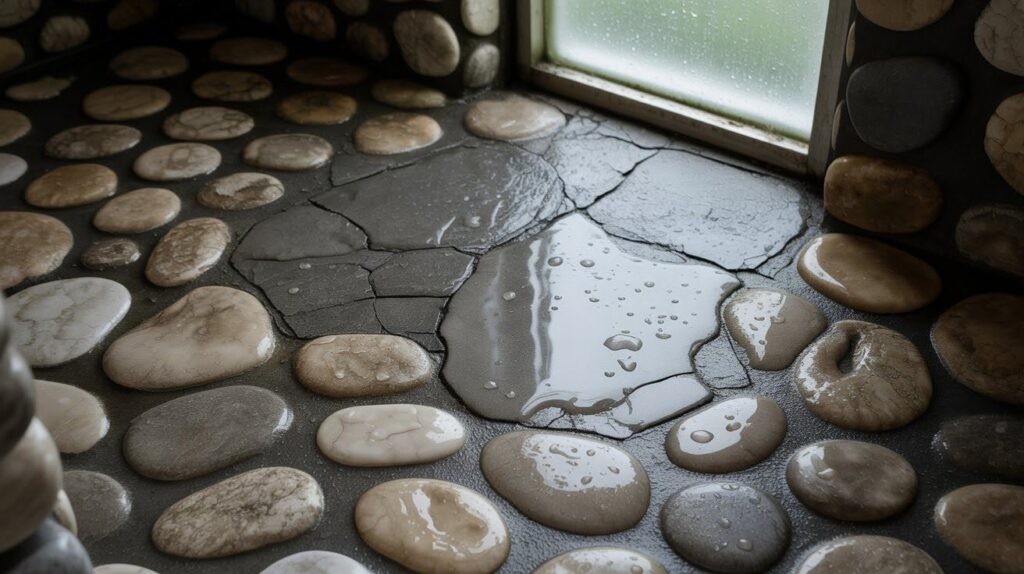
Causes
Water infiltrates beneath grout through cracks, weakening the bond. Poor-quality grout or age accelerates breakdown.
Solutions
Remove damaged grout and apply fresh material. Use high-quality products and seal to create moisture barriers.
7. Rust Stains
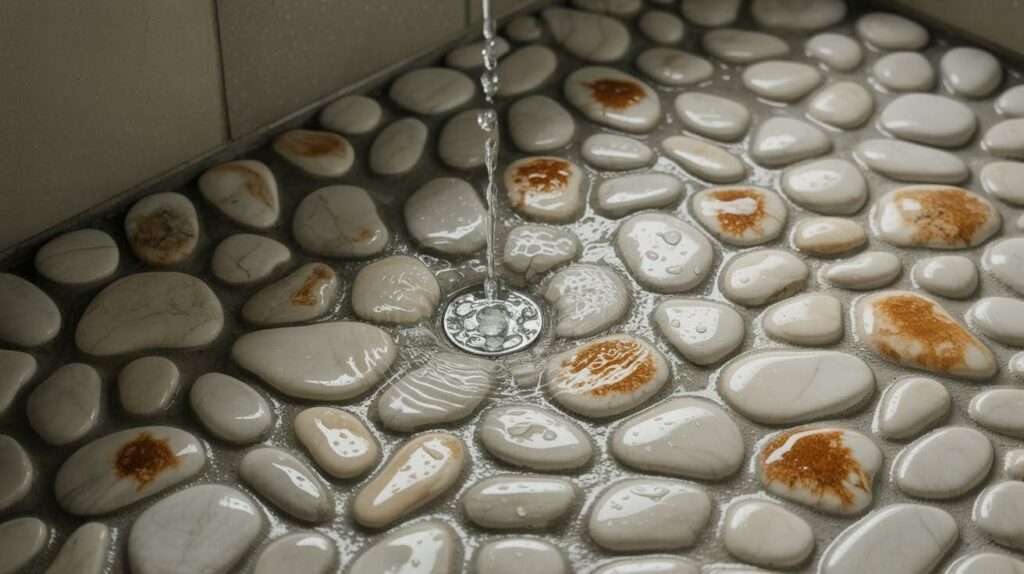
Causes
Metal particles under grout or in water supply oxidize when exposed to moisture, creating orange or brown stains.
Solutions
Apply stone-safe acidic rust removers. Identify and remove rust sources like metal debris or corroded pipes.
8. Uneven Color or Dark Patches
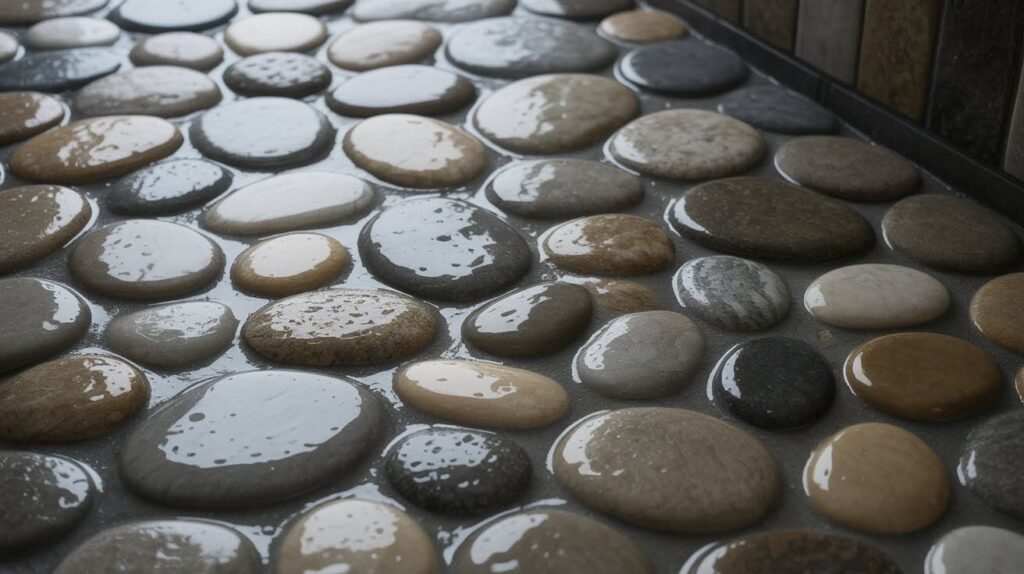
Causes
Porous stones absorb water at different rates. Uneven sealer application leaves some stones protected while others absorb moisture.
Solutions
Apply enhancing sealer evenly for consistent wet-look appearance. Professional regrinding may be needed for severe cases.
9. Slippery Surface
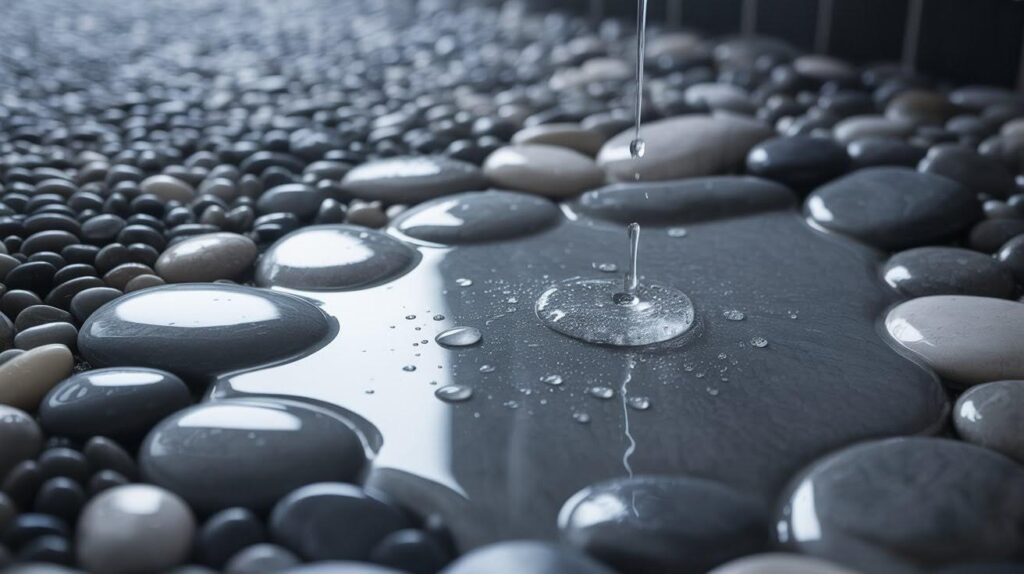
Causes
Polished stones lack texture for grip. Soap buildup creates a slick film over surfaces.
Solutions
Choose textured or matte-finish stones. Clean regularly to remove soap residues and consider slip-resistant treatments.
10. Sealer Failure or Cloudiness
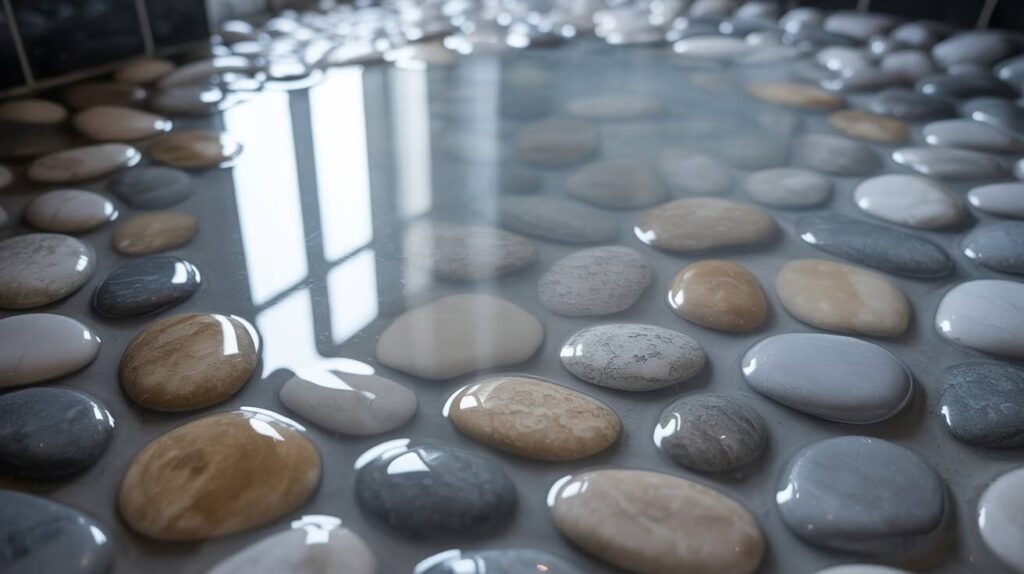
Causes
Moisture trapped under non-breathable sealers. Acidic cleaners react chemically with sealers, causing breakdown.
Solutions
Strip failed sealer completely. Reseal with breathable, penetrating products that allow moisture vapor to escape.
11. Odor Issues
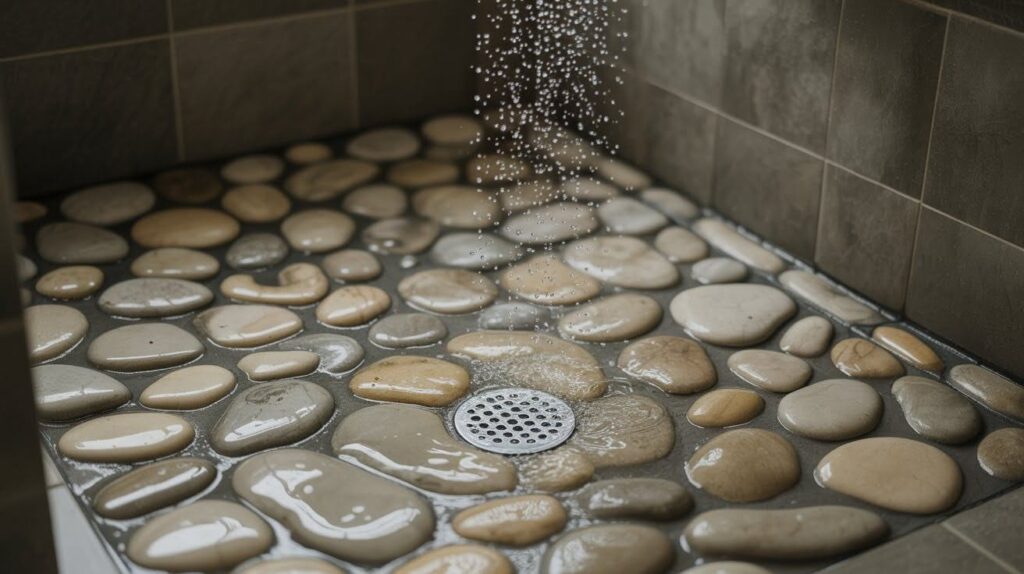
Causes
Water trapped in grout or underneath stones creates stagnant pools where bacteria and mold grow.
Solutions
Ensure proper drainage and ventilation. Deep clean and reseal to prevent water absorption that feeds odor-causing growth.
Preventive Measures to Avoid Common River Rock Floor Issues
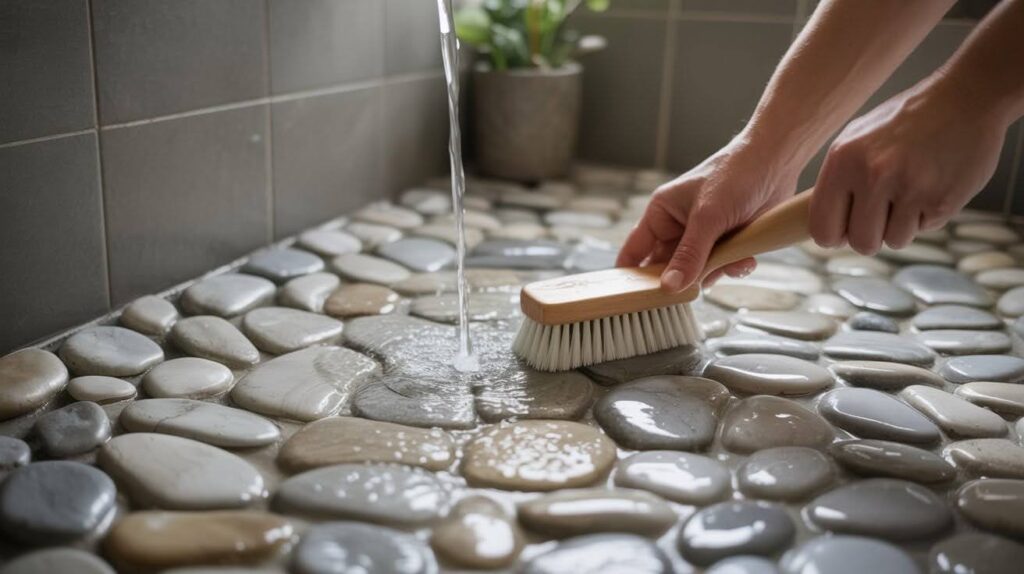
Daily cleaning, proper sealing, and good ventilation protect river rock shower floors from common damage. Follow these steps to maintain beauty and longevity.
Regular Cleaning and Maintenance
Rinse your shower floor daily to remove debris and soap residue before it hardens. Perform weekly gentle scrubbing with pH-neutral cleaners and a soft-bristle brush to reach between rocks where grime accumulates.
Proper Sealing Practices
Apply a high-quality penetrating stone sealer that soaks into the rock. Reseal every 1 to 3 years, depending on stone type and shower usage. Test water absorption annually by sprinkling water on the surface.
Moisture and Ventilation Management
Run your exhaust fan during showers and for 30 minutes afterward. Proper ventilation removes humid air that feeds mold growth. Inspect grout lines every few months and repair damaged areas immediately to prevent water infiltration.
Conclusion
Run your exhaust fan during showers and for 30 minutes afterward. Proper ventilation removes humid air that feeds mold growth.
Inspect grout lines every few months and repair damaged areas immediately to prevent water infiltration.
River rock shower floor problems managed under the right care routine. Most issues are prevented before the start by the daily rinsing, the regular sealing, and the weekly cleaning with pH-neutral products.
Homeowners save thousands by catching grout problems early instead of waiting for major repairs, I’ve seen.
For wide-ranging grout damage, consult with professionals who specialize in natural stone. Also, ask them about stubborn odors or serious staining.
Begin a suitable sealing process now or plan an expert assessment for a clean river rock shower. Share your experience of river rock floors if you leave comments below!
Frequently Asked Questions
How often should I clean my river rock shower floor?
Rinse the floor daily after each shower to prevent soap and debris buildup. Perform a deeper clean with pH-neutral stone cleaner and a soft brush weekly.
Can I use vinegar to clean river rock shower floors?
Use vinegar only for fresh efflorescence (white haze). Avoid using it regularly as acidic cleaners can etch and damage natural stone over time.
How do I know when my river rock floor needs resealing?
Sprinkle water on the surface. If it soaks in rather than beading up, it’s time to reseal. Most floors need resealing every 1 to 3 years.
Why does my river rock shower floor smell musty?
Musty odors come from trapped water and mold growth in grout lines or under stones. Improve ventilation, deep clean, and reseal grout to prevent water absorption.
Are river rock shower floors safe or too slippery?
They can be slippery if polished or covered in soap buildup. Choose textured, matte-finish stones and clean regularly to maintain traction and safety.

